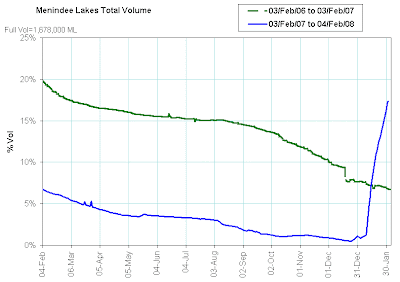Sue Hudson, an archaeologist with an indigenous background, contacted me through Phillip Diprose's blog. She found me via a search that led her to a comment I had posted. She had been using my earlier work, she emailed Phillip, and now we are in contact.
Sue contacted me because I told part of the indigenous story at local and regional level in my early writings. Now I have someone who shares my interest in the detail, the nature of language boundaries in New England, the interactions between groups, the way in which we might be able to use combinations of evidence to bring the indigenous story alive as real peoples.
I cannot begin to say how wonderful this is. Sue is the first person I have met in years who shares some of my very specific passions and who has the knowledge base to force my thinking.
Of particular importance is the fact that we both believe that historians have neglected the way in which the combination of archaeological, ethnohistorical, historical and modern data can be used to bring alive the Aboriginal past in a way still to be properly explored. This will only happen, however, if we can tell the story at local and regional level.
There are some funny side-effects here because telling the story as it was affects modern Aboriginal perceptions and positions.
I am not sure how far I want to go into this at this point, except to note that I am talking about intra-Aboriginal relations and power structures.
How do I bring all this alive to you?
Well, the starting point is geography. If you do not understand the geography in an area, you cannot understand the pattern of Aboriginal life.
A second point is to look at the current distribution of Aboriginal people, where they came from. Current distributions are not the same as they were at the time of European intrusion, less so the further you go back into the past. But they can provide interesting insights into past linkages.
Then there is the ethnohistorical evidence, essentially the views of Europeans at the time they arrived, along with subsequent analysis.
Obviously this is partial. But it is still rich, because evidence can be interpreted and reinterpreted in the light of later work. The story of a tribal fight may be interesting, but tell you little. The same fight may come to mean a great deal if it becomes a building block in a broader story.
Then there is the official historical data. Record after record provides pieces of information that, like the settler records, can be interpreted and re-interpreted.
Oral history can be fitted in. While very imperfect, it provides further pieces of evidence.
Finally, we have the increasing volume of archaeological evidence.
All this may seem pretty dry. To illustrate, let me quote from one of Sue's emails:
I have a very good friend living in Ashford. She is Aboriginal and shares with me my love of all things cultural (tools, places and history). She told me several important things: Her grandmother (who was semi-tribal) told her all her life not to mix with coastal people, they were never to be trusted. When Anaiwan people went to Inverell for ceremonies, they always camped as close to their own boundaries as possible – they were not liked by Gamaroi people but kinship ties brought them together for important occasions. Everybody fought with them – I have the axes from the last great Aboriginal/Aboriginal massacre in Armidale, fought near the present day teachers college, these were given to me by the great nephew of the police constable who broke up the fracas. The axes have been sourced to Armidale area and Walcha (Daingutti).
Here is an example of oral history. What does it tell us? Rather a lot.
You need to start by remembering the geography of New England.
The New England Tablelands, Australia's largest Tablelands, forms the central core. High by Australian standards, this was a poorer area in food terms. It was also cold in winter. Aboriginal populations were relatively low.
Major rivers flow to the east and west from the Tablelands.
The eastern rivers flowing down to the sea formed resource rich areas combining a variety of habitats. These major river valleys were homes to different, large population Aboriginal language groups. Their territories extended up the valleys onto the Tablelands' headwaters.
To the west, the more open country allowed for expansion by a single Aboriginal language group, the Kamilaroi (Gamaroi) people. By the time of European arrival, the Kamilaroi occupied New England's western slopes and adjacent plains and appeared to be expanding into what is now the Hunter Valley.
The smaller Tablelands' groups were essentially squeezed between the big coastal tribal groups and the Kamilaroi.
Return to the quote from Sue's email. Ashford is near Inverell and in Kamilaroi territory. The Anaiwan were a Tablelands' group.
Sue's evidence shows that the small Anaiwan group round Uralla had a western focus; many of the creeks here flow west. This fits with the comments on the kinship links with the Kamilaroi. At the same time, we can see the distrust of the stronger Kamiliaroi among the weaker Anaiwan.
Armidale is just fourteen miles north of Uralla. This is also recorded as Anaiwan territory. Yet Armidale appears to have been contested territory, with connections to the Dainggatti (Daingutti) of the Upper Macleay Valley. Armidale is in the Macleay headwaters. The Dainggatti were also strong in what is now the Walcha area to the south east of Uralla, also in the Macleay headwaters.
So was the last recorded tribal battle in Armidale a fight between the Dainggatti trying to assert control and the local Aniawan?
The answer is that we don't know. But I hope that I have said enough to show that we can write the history of Aboriginal Australia in new ways, to bring far more of the past alive than many realise.





 As at today, the
As at today, the 





